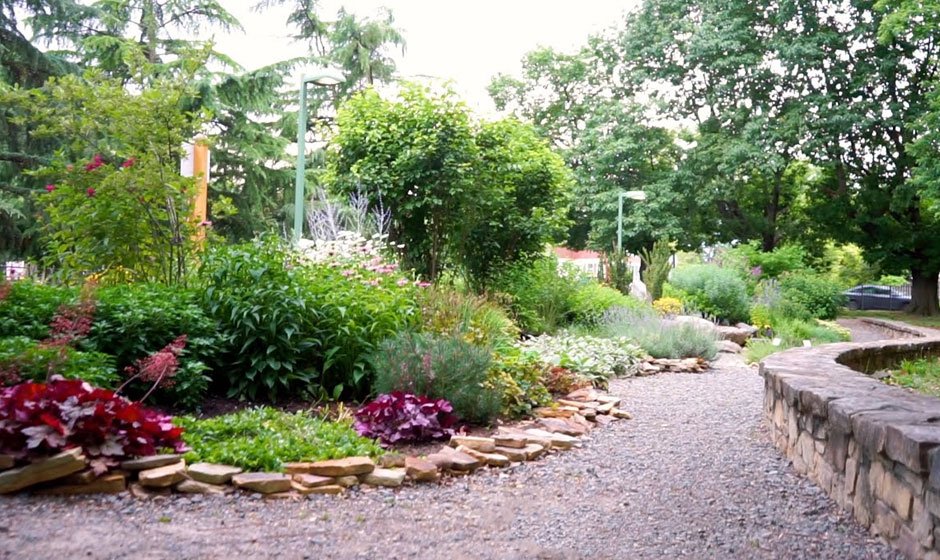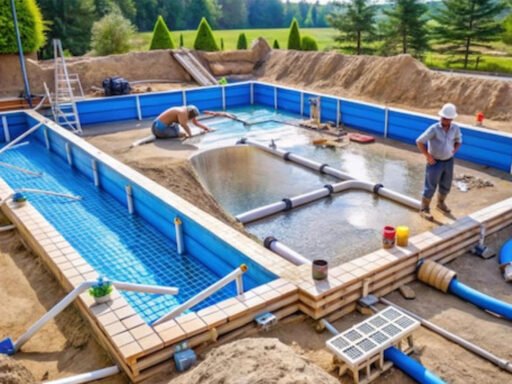Creating outdoor spaces tailored to veterans’ unique needs can significantly impact their healing journey. For many veterans, transitioning back to civilian life after service can be a challenging experience. Integrating therapeutic gardens into their living environments offers a powerful solution to support their physical, emotional, and psychological well-being. This article explores the concept of therapeutic gardens’ benefits, design considerations, and how veterans can utilize VA Renovation Loans to make these healing spaces a reality.
1. The Concept and Benefits of Therapeutic Gardens
Therapeutic gardens are carefully designed outdoor spaces that promote healing and wellness. These gardens incorporate natural elements such as plants, water features, and walking paths to create a serene environment that encourages relaxation, reflection, and rehabilitation. For veterans, therapeutic gardens offer numerous benefits:
– Mental Health Support: Nature has a profound calming effect on the mind. Exposure to greenery and natural elements helps reduce stress, anxiety, and symptoms of PTSD, which are common among veterans.
– Physical Rehabilitation: Therapeutic gardens can be designed with features that support physical rehabilitation, such as raised garden beds for horticultural therapy, walking paths for mobility training, and areas for strength-building exercises.
– Social Interaction: These spaces provide a safe and comfortable environment for veterans to engage in social activities, build community connections, and reduce feelings of isolation.
– Emotional Well-being: Nurturing plants and spending time outdoors can boost mood, enhance a sense of purpose, and provide an outlet for creative expression.
2. Key Design Elements for Therapeutic Gardens
Designing a therapeutic garden involves thoughtful consideration of various elements to ensure it meets the unique needs of veterans. Here are some key design principles to consider:
-Accessibility: Ensure the garden is accessible to veterans with varying levels of mobility. Wide, smooth pathways, ramps, and seating areas allow easy navigation for those using wheelchairs or walkers.
-Sensory Stimulation: A therapeutic garden should engage all the senses. To create a stimulating environment, include a variety of plants with different textures, colors, and scents. Adding elements like wind chimes or water features can enhance auditory experiences, promoting a sense of calm and tranquility.
-Privacy and Safety: Many veterans may feel more comfortable in a garden space that offers privacy and security. Natural barriers like hedges or fences can create secluded areas where veterans can relax without feeling exposed.
-Restorative Features: Integrate elements that foster a sense of peace and contemplation, such as benches, quiet corners, and areas for meditation or mindfulness practices. Water features like fountains or small ponds can add to the tranquility of the space.
3. Utilizing VA Renovation Loans for Garden Renovations
For many veterans, the cost of renovating or creating a therapeutic garden can be a barrier. However, VA Renovation loans, backed by the Department of Veterans Affairs (VA), offer a valuable resource to overcome this challenge. These loans provide funding for home improvements, including outdoor space renovations.
– Eligibility and Benefits: VA Renovation Loans are available to veterans, active-duty service members, and certain surviving spouses. These loans offer competitive interest rates, no private mortgage insurance requirements, and the ability to finance home purchases and renovations into a single loan.
– Covered Renovations: The scope of renovations covered by VA Renovation Loans is broad, allowing veterans to upgrade their outdoor spaces. This includes landscaping, installing water features, creating wheelchair-accessible pathways, building raised garden beds, and adding seating or relaxation areas.
Application Process: Veterans need to work with a VA-approved lender to apply for a VA renovation loan. The lender will evaluate the project scope, estimate costs, and determine loan eligibility based on the veteran’s financial situation and the proposed renovations.
By utilizing VA Renovation Loans, veterans can transform their outdoor spaces into therapeutic gardens that provide healing, comfort, and support for their overall well-being.
4. Tips for Veterans Planning a Therapeutic Garden
Creating a therapeutic garden is a personal journey that should reflect each veteran’s individual needs and preferences. Here are some tips to guide veterans in planning their gardens:
Start Small: If you’re new to gardening, start with a manageable project. Consider starting with a small area or a few potted plants to gain confidence and experience.
– Incorporate Personal Touches: Make the garden your own by adding elements of personal significance. This could be a memorial area, a flagpole, or a collection of favorite plants.
Seek Professional Guidance: If you’re unsure about how to design or maintain a therapeutic garden, consider consulting with a landscape architect or horticultural therapist who specializes in creating healing spaces.
– Engage in Community Programs: Many communities offer gardening programs or resources specifically for veterans. These programs can provide valuable support, resources, and opportunities to connect with others with similar interests.
Conclusion
Outdoor space renovations, particularly therapeutic gardens, offer veterans unique opportunities to create healing environments that promote their physical, mental, and emotional well-being. By leveraging resources such as VA Renovation Loans, veterans can transform their homes into sanctuaries of peace and rejuvenation, supporting their journey toward healing and recovery.





